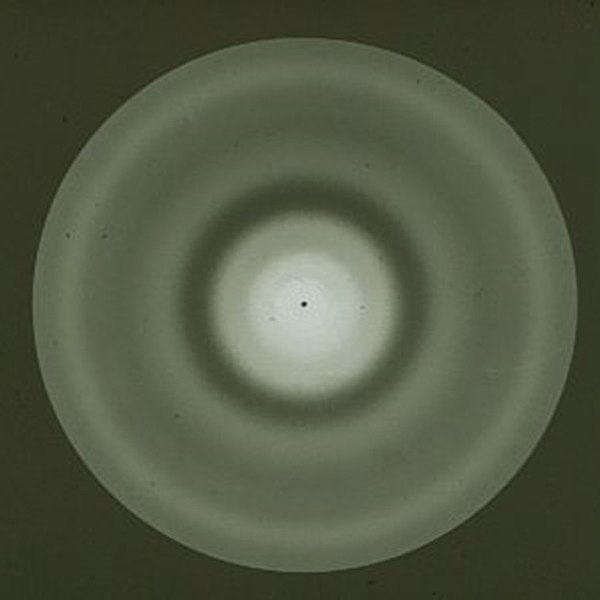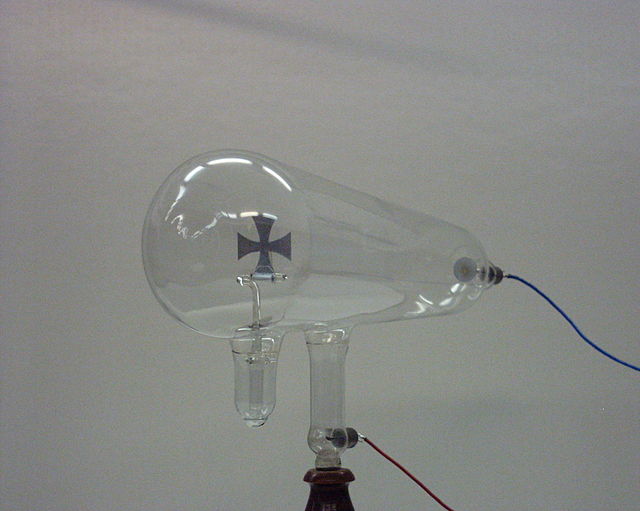Sir George Paget Thomson, FRS was a British physicist and Nobel laureate in physics recognized for his discovery of the wave properties of the electron by electron diffraction.
Thomson in 1937
Kathleen Adam Smith Paget Thomson
Electron diffraction is a generic term for phenomena associated with changes in the direction of electron beams due to elastic interactions with atoms. It occurs due to elastic scattering, when there is no change in the energy of the electrons. The negatively charged electrons are scattered due to Coulomb forces when they interact with both the positively charged atomic core and the negatively charged electrons around the atoms. The resulting map of the directions of the electrons far from the sample is called a diffraction pattern, see for instance Figure 1. Beyond patterns showing the directions of electrons, electron diffraction also plays a major role in the contrast of images in electron microscopes.
Figure 1: Selected area diffraction pattern of a twinned austenite crystal in a piece of steel
Figure 5: Replica built in 1980 by Ernst Ruska of the original electron microscope, in the Deutsches Museum in Munich
Figure 24: Gas electron diffraction pattern of benzene.
Image: Katódsugarak mágneses mezőben(1)






